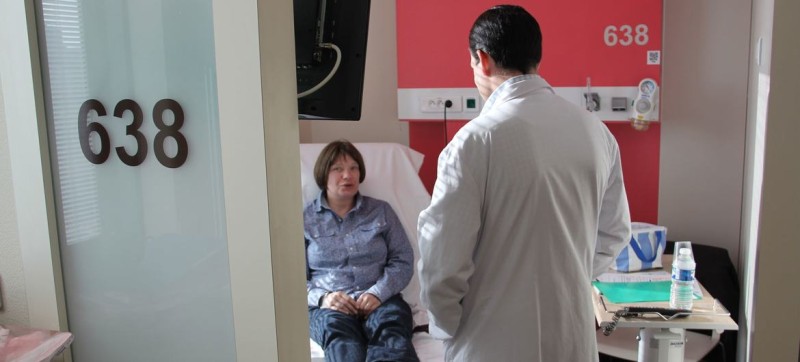
© WHO/Gilles Reboux An oncologist consults with a cancer patient at a hospital in Lyon, France.
There are predicted to be more than 35 million cancer cases during 2050, up from the estimated 20 million in 2022, according to latest figures from the International Agency for Research on Cancer (IARC), a specialized branch of the UN World Health Organization (WHO).
The increase reflects both population ageing and growth, as well as changes to people’s exposure to risk factors. Tobacco, alcohol and obesity are key factors, along with air pollution.
Varying patterns
Richer countries are expected to have the greatest absolute increase in cancer, with an additional 4.8 million new cases predicted in 2050.
However, low and middle-income countries should see a higher proportional increase in cancer, while mortality is projected to almost double.
The estimates from the IARC’s Global Cancer Observatory are based on the best sources of data available from 185 countries and covers 36 different forms of cancer.
They were published alongside a WHO survey from 115 countries which showed that the majority do not adequately finance priority cancer and palliative care services as part of universal health coverage.
Common cancers globally
Ten types of cancer collectively comprised around two-thirds of new cases and deaths globally in 2022, the IARC said.
Lung cancer was the most commonly occurring form worldwide with 2.5 million new cases. It accounted for more than 12 per cent of all new cases and 18.9 per cent of deaths, 1.8 million, making it the leading cause of cancer death.
Female breast cancer ranked second in terms of occurrence, with 2.3 million cases, worldwide or 11.6 per cent, but accounted for 6.9 per cent of deaths.
Other commonly occurring cancers were colorectal, prostate and stomach cancer.
Colorectal cancer was the second leading cause of cancer death, followed by liver, breast and stomach cancer.
Cervical cancer was the eighth most commonly occurring cancer globally, the ninth leading cause of cancer death, and the most common cancer in women in 25 countries, many of which are in sub-Saharan Africa.
Inequalities and investment
The IARC estimates – issued ahead of World Cancer Day on 4 February – also revealed striking inequalities, particularly in breast cancer.
One in 12 women in richer countries will be diagnosed with the disease in their lifetime and one in 71 will die of it, the agency said. However, although only one in 27 women in poorer countries will receive a positive breast cancer diagnosis, one in 48 will die.
These women “are at a much higher risk of dying of the disease due to late diagnosis and inadequate access to quality treatment,” said Dr. Isabelle Soerjomataram, Deputy Head of the Cancer Surveillance Branch at IARC.
The WHO survey also revealed significant global inequities in cancer services. For example, higher income countries were up to seven times more likely to include lung cancer-related services in their health benefits packages.
“WHO, including through its cancer initiatives, is working intensively with more than 75 governments to develop, finance and implement policies to promote cancer care for all,” said Dr Bente Mikkelsen, Director of its Department of Noncommunicable Diseases, underlining the need for greater investment.

